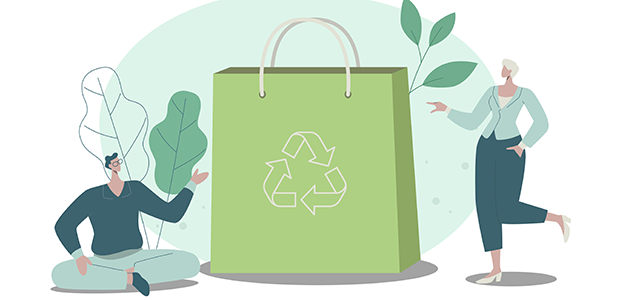
Greening the supply chain journey with technology
Sustainability has become a top priority for many consumers, and retailers are responding. Shopping centres, convenience stores, retailers, and supermarket chains are transitioning to greener and more sustainable operations.
As a consumer, it is an exciting time to witness more companies listening to these demands and revolutionising old and unethical practices.
According to US Environmental Protection Agency (EPA), there has been a nearly 90% increase in CO2 emissions since 1970. Additionally, the Intergovernmental Panel on Climate Change (IPCC) report findings state that “unless there are immediate, rapid and large-scale reductions in greenhouse gas emissions, limiting warming to close to 1.5°C or even 2°C will be beyond reach”.
The retail industry is a large contributor to this increase, and it does not show signs of slowing down anytime soon. Last year, the global retail market generated sales of over $27 trillion, with a forecast to reach over $30 trillion by 2024. The US, China, India, Germany, and the UK count as some of the world’s largest powerhouses in the retail market.
With global climate change reaching a tipping point, governments and businesses are running out of time in greening the supply chain. Businesses need to be more transparent and focus on reducing the impact on the planet, answering to the 'how' in product manufacturing. It applies not only to raw materials used but also to working conditions and welfare practices. For businesses to advance on their green supply journeys, they need to pay attention to both upstream suppliers like component manufacturers, and multi-tiered suppliers along with their downstream suppliers like logistics service providers when it comes to ESG (environmental, social, and governance) performance.
At the start of the year, Germany enforced the implementation of 'greener' supply chain practices and passed the Supply Chain Due Diligence Act, mandating companies (with over 3,000 employees from 2023 and over 1,000 employees from 2024) to comply with due diligence obligations surrounding human rights and environmental regulations. And there are more such laws to follow in other countries.
In early June this year, another stringent set of supply chain regulations was adopted by the EU parliament. The amendment will require companies to actively assess the social and environmental impact of their operations. The parliament has made it clear that companies will be obligated to identify any adverse effects their activities may have on labour and the environment. They will be required to take necessary measures to prevent, halt, or mitigate them.
Early adopters of technology are already noticing the positive impact. One such initiative is the use of sustainable packaging materials. In addition to this, technology plays a large role in driving the green supply chain journey. Utilising technology, you can drill further down your value chain and identify suppliers who use more plastic in packaging and, on the contrary, suppliers who use recycled materials and try to minimise packaging. A packaging software, for example, allows retailers to implement this functionality and track which product group and product produces the most waste and, conversely, which has the highest recycling rate, and make an informed decision.
The scope of green initiatives in the retail industry and its supply chain is broad and has multiple data touchpoints. With technology, one can make sense of the data by converting it into customisable and useful information. Creating a balanced scorecard, measuring, analysing and sharing the sustainability data, such as carbon emissions, greenhouse gas emissions (GHG), chemicals used in the product, health, safety and working conditions for factory works, water usage, packaging, and other metrics, is of utmost importance.
Quality decisions cannot be achieved if data is incomplete, inaccurate, or stale. Data can be sliced-and-diced as required according to the chosen criteria. Analysing the data by supplier, product category, or geography enables quick and informed decision-making.
The future of sustainable retail is bright. As more retailers recognise the importance of sustainable practices, they will continue to implement green initiatives in their operations. In the future, we can expect to see more sustainable packaging materials being used, and more efficient technology being on-boarded in the retail sector. Finally, we can expect to see more collaboration between retailers and consumers when it comes to greening the supply chain.

